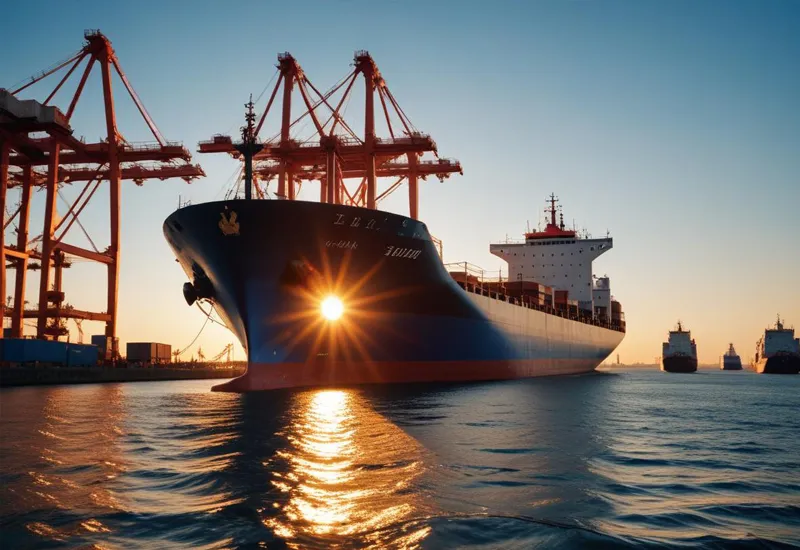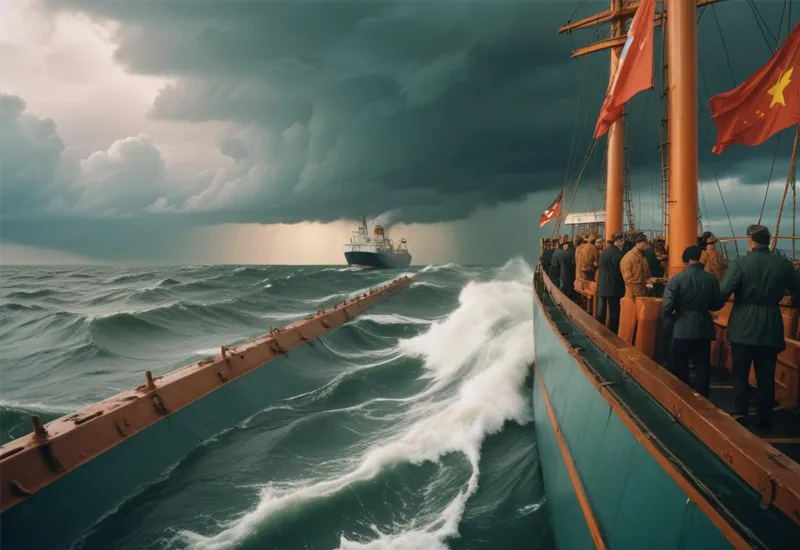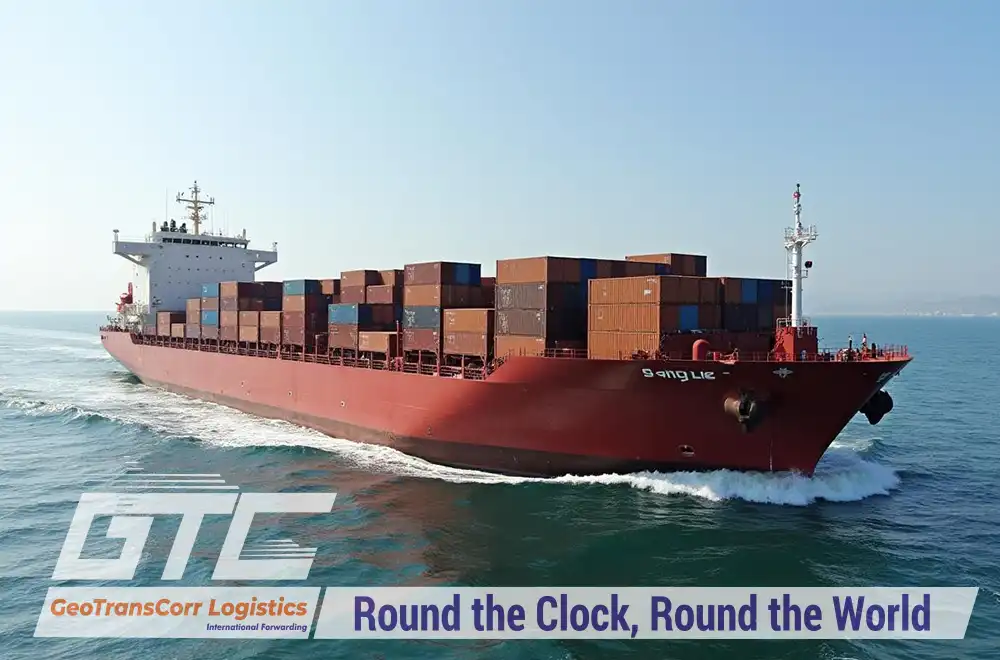In recent years, the trade relationship between China and Russia has evolved into one of the most dynamic and strategic partnerships in the global economy. From the exchange of cutting-edge technology and manufactured goods by China to Russia’s vital exports of natural resources, this bilateral trade has become a cornerstone of both nations’ economic strategies. However, the path is not without its challenges and opportunities.
Join us as we delve into the historical context, current statistics, and future outlook of China-Russia trade. Discover how these two economic giants navigate their complex relationship and what this means for the global market. Read this article, which uses the OEC database to explore the full scope of this trade-driven dynamic and its implications for businesses worldwide.
Introduction
In recent years, trade relations between China and Russia have seen significant growth and have become a vital element in the economic strategies of both countries. This growing partnership is characterized by a significant increase in the volume of trade, a diverse range of traded goods, and strategic economic cooperation.
2022 marked a milestone in China-Russia trade relations, with China exporting goods worth $75.4 billion to Russia. This export portfolio includes major products like broadcasting equipment, computers, and large construction vehicles. Over the past five years, China’s exports to Russia have surged at an astonishing annual growth rate of 94%, highlighting the rapid expansion and deepening of economic ties between the two nations.
Conversely, Russia’s exports to China reached $101 billion in 2022, dominated by crude petroleum, coal briquettes, and petroleum gas. This trade relationship has also seen substantial growth, with Russian exports to China increasing at an annualized rate of 67.7% over the past five years. In addition to goods, Russia also exported services to China, including transportation and construction services, valued at $2.62 billion in 2020.
This trade dynamic is not merely about numbers; it reflects a strategic alignment and mutual dependence that has significant implications for global trade dynamics and geopolitical landscapes. The complementary nature of the goods traded—China’s technological and manufactured products for Russia’s natural resources—underscores a synergistic relationship poised for further growth.

A Historical Journey: The Evolution of China-Russia Trade Relations
The trade relationship between China and Russia has a rich and complex history, marked by periods of cooperation and tension. While their economic interaction dates back centuries, it is in the modern era, particularly since the end of the Cold War, that significant evolution in their trade dynamics has occurred.
Early Interactions
Historically, China and Russia traded through the Silk Road, exchanging goods like silk, tea, and furs. Formal trade routes and agreements began to take shape during the 17th and 18th centuries, with the Treaty of Nerchinsk in 1689 helping establish borders and trade routes despite ongoing conflicts.
Soviet Era and Early PRC Relations
The establishment of the People’s Republic of China (PRC) in 1949 and the Soviet Union’s support for the fledgling communist state marked a period of close political and economic ties. During the 1950s, the Soviet Union provided substantial economic and technical assistance to China. However, the Sino-Soviet split in the late 1950s and early 1960s led to a significant cooling of relations, severely curtailing bilateral trade for much of the Cold War.
Post-Soviet Revival
The dissolution of the Soviet Union in 1991 and subsequent economic reforms in Russia and China set the stage for a revival of bilateral trade relations. The 1990s saw gradual improvements as both countries sought to rebuild and diversify their economies. In 1996, China and Russia established the “strategic partnership of coordination,” marking a renewed commitment to enhancing trade ties.
21st Century Expansion
The early 2000s witnessed a significant acceleration in China-Russia trade relations. The Treaty of Good-Neighborliness and Friendly Cooperation in 2001 laid the groundwork for expanded economic collaboration, with energy trade, particularly in oil and gas, becoming a cornerstone of the relationship. Throughout the 2010s, China and Russia deepened their economic ties, driven by mutual geopolitical interests and complementary economic needs, further integrated by initiatives like China’s Belt and Road Initiative (BRI) and Eurasian Economic Union (EAEU).

Current Trade Statistics Between Russia and China
The trade relationship between China and Russia has reached unprecedented levels in recent years, demonstrating robust growth and diversification. By 2022, the bilateral trade volume had grown significantly, with China and Russia becoming vital trade partners for each other.
China’s Exports to Russia
In 2022, China exported $75.4 billion worth of goods to Russia. The main export products included:
- Broadcasting Equipment: $4.11 billion
- Computers: $2.59 billion
- Large Construction Vehicles: $1.71 billion
Since March 2024, amid problems with bank payments, China’s exports to Russia have been declining. Thus, in April 2024, exports amounted to $8.32 billion, compared to $9.62 billion in April 2023, indicating a decrease of 13.6%. The top exports during this period were:
- Cars
- Computers
- Telephones
- Delivery Trucks
- Large Construction Vehicles

Russia’s Exports to China
In 2022, Russia exported $101 billion worth of goods to China. The main export products included:
- Crude Petroleum: $51 billion
- Coal Briquettes: $9.64 billion
- Petroleum Gas: $9.5 billion
By July 2024, the export volume to China reached $75 billion, showing an increase of 5% compared with the period January-July 2023 and 22% compared with the period January-July 2022.
The top imports during this period were:
- Crude Petroleum
- Coal Briquettes
- Petroleum Gas
- Agriculture
- Sawn Wood

Trade Balance and Economic Impact
Despite the high volume of trade, China experienced a negative trade balance with Russia in April 2024, with imports from Russia ($11.4 billion) exceeding exports to Russia ($8.32 billion) by $3.13 billion. This imbalance is reflective of China’s significant importation of energy resources from Russia, which includes crude petroleum, coal, and natural gas.
Regional Contributions
China’s exports to Russia in April 2024 were predominantly from the following provinces:
- Zhejiang Province: $1.32 billion
- Guangdong Province: $1.06 billion
- Shandong Province: $711 million
- Jiangsu Province: $615 million
- Anhui Province: $510 million
Russia’s exports to China were mainly directed to:
- Beijing: $2.69 billion
- Shandong Province: $2.21 billion
- Heilongjiang Province: $2.16 billion
- Shanghai Province: $757 million
- Zhejiang Province: $494 million
Challenges and Opportunities of Trade Exchanges Between Russia and China
The burgeoning trade relationship between China and Russia presents both challenges and opportunities. Trade barriers and regulatory differences pose obstacles to seamless economic integration. However, these challenges are counterbalanced by numerous opportunities. The complementary nature of their economies—China’s technological and manufacturing capabilities paired with Russia’s abundant natural resources—creates a strong foundation for mutual growth.
Furthermore, initiatives like «Belt and Road Initiative» and Eurasian Economic Union offer platforms for enhanced cooperation, infrastructure development, and expanded market access, promising a robust future for China-Russia trade relations.

Conclusion
The China-Russia trade relationship has transformed into a key strategic partnership, marked by significant economic interdependence. China exports high-tech and manufactured goods, while Russia supplies essential natural resources, creating mutual benefits. Despite challenges like political instability and trade barriers, opportunities for growth remain vast. Initiatives such as the Belt and Road Initiative and the Eurasian Economic Union enhance this partnership, promising continued expansion and prosperity.
Ready to streamline your China-Russia trade operations? Partner with GTC for expert freight forwarding solutions that ensure efficient and reliable logistics. We will handle will all so you can focus on growing your business. Contact us today to optimize your supply chain and make the most of this thriving trade corridor.






